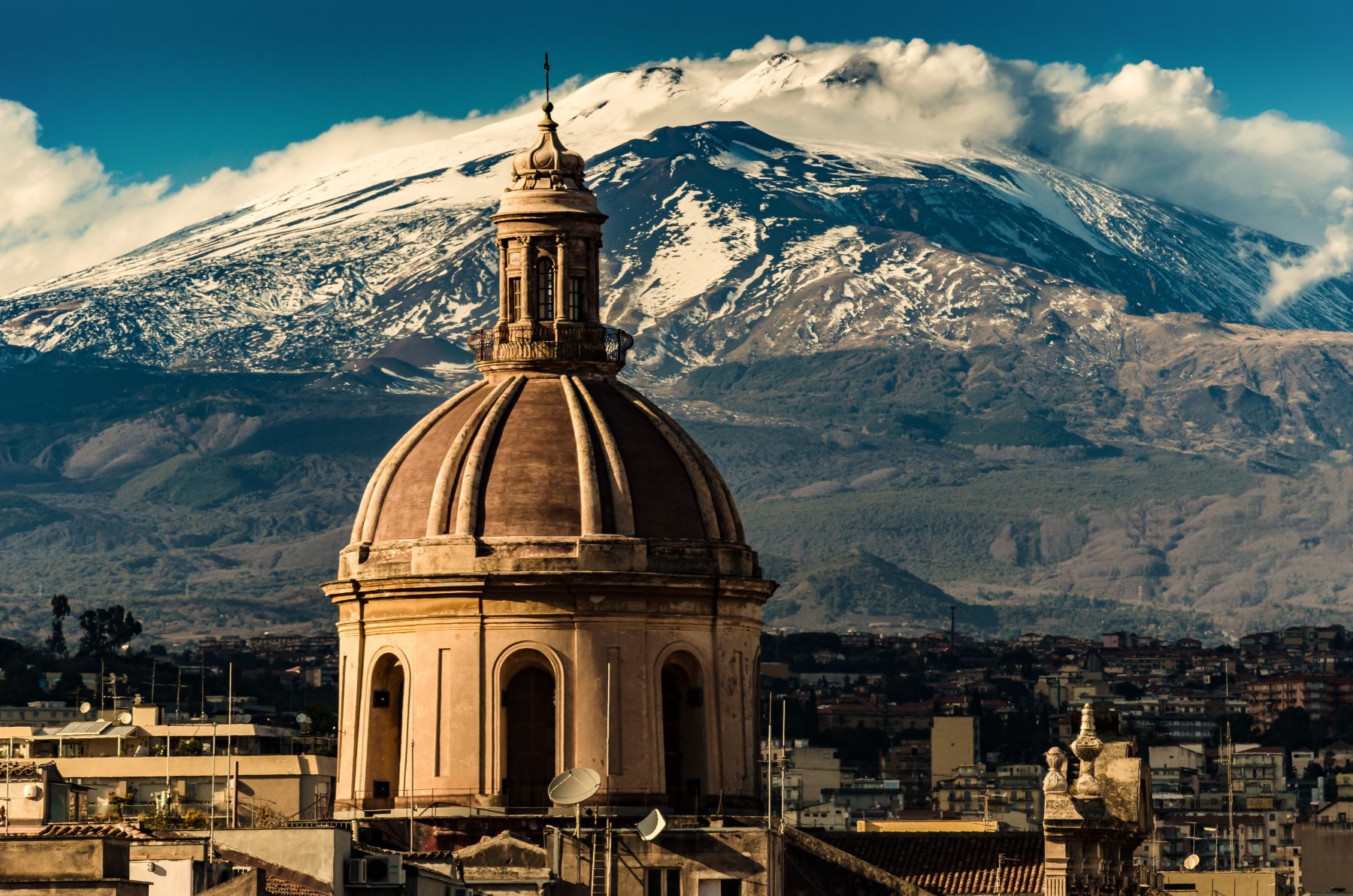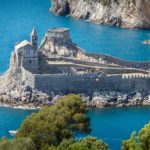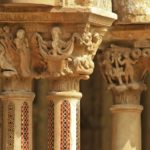The best of Eastern Sicily
Today we start talking about the best of Eastern Sicily! Let’s go!
“Without Sicily, Italy Creates No Image In The Soul: Here Is The Key To Everything”…
It is what Johann Wolfgang (von) Goethe, the most famous German poet, playwright and author wrote about the main Italian island: Sicily. When his musings were published as part of Italian Journey, many flocked to the island, buoyed by his descriptions of its enchanting beauty.
Even today, Sicily remains one of the most visited places in Italy and is among the most appreciated Italian regions for the large amount of attractions that a visitor can enjoy.
A mixture of cultures
Land of conquest, this island in the middle of the Mediterranean sea, has been dominated by great empires and civilizations. This has made Sicily a unique land in the world, where Arab culture is mixed with ancient Greek and Roman cultures.
This Italian region has so much to offer, that we decided to split the article into two parts. The first is dedicated to the eastern Sicily and the second to the western side.
Today we start talking about the best of eastern Sicily, with its provinces of Catania, Messina, Enna, Syracuse and Ragusa.
How to reach the Eastern Sicily
To reach this part of the Island, the main airport is “Fontanarossa Airport” in Catania.
To discover the best of Eastern Sicily, Catania is the perfect city from where to start!
Catania, my hometown
It is the city where I was born and where I grew up until 2005, when I moved to Milan. When I lived in Milan, I returned to my city many times and I have been back there several times even now that I live in New York.
Those born in Sicily always carry with them a bit of their land. In fact I have a lava stone from the volcano Etna in my New York apartment! But when you leave Sicily, you don’t just bring something material with you.
Those who move from Sicily bring with them the culinary traditions, the advice of the grandmas and the desire to make their island known to the whole world!
That is why today, more than usual, I am so happy to write about my city and my country of origin.
CATANIA & THE ETNA VOLCANO
Catania overlooks the Ionian Sea and rests at the foot of the Etna volcano, the highest active volcano in Europe. With its 3340 meters, “u Mongibbeddu“ (as the inhabitants of the city call it), dominates the whole city. As it often erupts, the people of Catania are used to seeing the red lava tongue running down the side and listening to the roar of the volcano.
The presence of this volcano has always influenced the lifestyle of the inhabitants who have had to face earthquakes and destruction over the centuries. But the city has always been reborn with a new aspect, up to the last visible today with a prevalence of Baroque style. The architecture of the city is mostly dark. All the streets are paved with lava stones and the buildings are mostly dark gray with white stone decorations.
The main entrance to the city is Porta Uzeda, through which you arrive in Piazza Duomo, the main square of Catania. Two things stand out in this square: the baroque Duomo and the elephant with an obelisk on its back. This animal is the symbol of the city. Legend has it that it was a sorcerer who was transformed into a lava stone elephant and positioned in the center of the main square.
Behind the main square, there is a baroque fountain from which water flows from the underground river: the Amenano. This fountain marks the border with one of the most beautiful attractions of the city: the ancient fish market, called “la pescheria“. Protected by the UNESCO, this market is the oldest fish market in Europe. Colors, smells and sounds will always remain fixed in the memory of visitors.
Our journey through the best of eastern Sicily continue visiting the best things in Catania.
5 Things not to be missed in Catania besides the Duomo and the Pescheria:
Via Crociferi, the street of the baroque churches. In a stretch of road less than 500 meters long, four baroque churches of immense beauty follow one another.
Via Etnea, the longest street in the city and the third longest in Europe (after the Champs-Élysées in Paris and Via Maqueda in Palermo).
The Benedictine monastery, where today the University of Catania is located, is one of the most beautiful examples of Baroque architecture in Italy. The monastery church is the largest church in Sicily.
The opera house Vincenzo Bellini. Dedicated to the composer of the same name, famous throughout the world for the opera “La Norma” (the most famous aria is Casta Diva).
Piazza Stesicoro, where the remains of the ancient Roman amphitheater are located. Once little smaller than the Colosseum, it was a veritable Arena where Roman gladiators fought against wild beasts.
MESSINA: TAORMINA & THE AEOLIAN ISLAND
Between Catania and Messina is one of the most famous towns on the island: Taormina. This small town is raised above sea level, but a cable car connects the old town to the sea coast. It is part of the province of Messina even if Many tourists choose Taormina as the base of their trip to Sicily, to discover the Etna volcano and the fantastic vineyards that produce the famous Etna Rosso wine.
A vacation in Taormina offers a complete vacation of everything: luxury hotels, beautiful beaches, historical attractions, excellent restaurants and much more. From Taormina you can easily organize a tour aboard an off-road vehicle to reach the highest part of the Etna volcano. Our tour includes pick up at the hotel, trip to the volcano, visit to one of the beautiful vineyards of Etna with lunch and tasting of local wines.
For theater lovers, Taormina offers high-level shows in the perfect setting of the ancient Roman theater. Check the shows and availability before your arrival in Taormina.
The city of Messina does not have much to offer, since it was almost entirely destroyed by a tsunami in 1908. But Messina boasts a real jewel besides Taormina: the archipelago of the Aeolian Islands. We have dedicated a special article to this archipelago that you can read by clicking here.
SYRACUSE
Syracuse, about 60 km from Catania, is the Sicilian city that best expresses the Greek domination on the island. Outside the city is the archaeological park of Syracuse, where it is possible to admire the ancient Greek theater still used today to represent the great classical works of Greek literature.
In addition to the theater, don’t miss the ear of Dionisio, a cave used for the extraction of stone and later turned into a prison. Legend has it that the tyrant Dionysus, imprisoned his enemies and thanks to a hole on the top, he could hear all the plots against his own kingdom.
After visiting the archaeological park, it’s time to visit the old part of the city. It is built on a small island, called Ortigia, separated from the mainland by just 150 meters.
This small island contains all the splendor of the city that culminates in its cathedral, the church of Saint Lucia. It is an ancient temple dedicated to the goddess Athena and transformed into a church with the advent of Christianity. Following the 1963 earthquake, the façade of the church was rebuilt in Baroque and Rococo style.
Stroll through the narrow streets of Ortigia and be enchanted by the contrast of noble palaces mixed with the humble fishermen’s houses.
Our journey to discover the best of Eastern Sicily continue to the Baroque Valley: NOTO, RAGUSA & MODICA
Noto
About 20 miles from Syracuse is the beautiful town of Noto. This is considered the city of Sicilian baroque and it is no coincidence that it was called “The Capital of the Baroque” and its historic center was declared a World Heritage Site by UNESCO in 2002.
It is reachable from different routes but accessed from the Porta Reale is the right way to start your visit in the Baroque capital! Walking along Corso Vittorio Emanuele, about 100 meters away, you will find the Church of Santa Chiara, a baroque architecture of the highest quality. Absolutely not to be missed during your visit of Noto:
– The cathedral, a beautiful example of Baroque architecture, dominates the entire historic center.
– Palazzo Nicolaci The Palace of the Princes of Nicolaci, recently restored to its ancient splendor, is a structure that represents in its entirety the artistic wealth of this town. One of the highest examples of Baroque style in the world!
– Caffe Sicilia, a historic pastry bar. Corrado Assenza, master pastry chef, will make you discover all the flavors of Sicilian pastry in a special way!
Ragusa
In 2002 Ragusa became part of the UNESCO world heritage sites, along with other Baroque centers of the Val di Noto. The historic center of the city (called Ragusa Ibla) is a treasure of extraordinary richness, which embodies its maximum expression of beauty in the Cathedral of San Giorgio.
Walking through Ragusa Ibla you will immerse yourself in a charming, welcoming atmosphere, steeped in history, whose real protagonist is the exuberant architectural style of the Baroque. Baroque art is celebrated in every architectural element of this district: not only the churches and ancient buildings, but also the small squares and alleys are a testament to the Iblean baroque architectural tradition.
The most important event that is celebrated in Ragusa is the “Feast of San Giorgio”, the last Sunday of May: it is a religious and folkloristic event.
Modica
Among the cities to see in Sicily, Modica can stay well at the top of the list. Not only for its baroque architecture, for its fascinating and timeless history, but also for discovering its sweetest secret: the recipe for Modica chocolate, grainy and friable, with an intense flavor, spicy and flavored to taste, is a unique product that is produced only here.
On the inhabited center stand the facades of the churches of San Giorgio and San Pietro and the ruins of the castle that has never been rebuilt: climb towards the upper part of the town up to the Pizzo lookout, from which it dominates the entire historic center.
Don’t miss the rock church of San Nicolò Inferiore, of Byzantine origin, and the balconies of Palazzo Napolino.
Do not leave Modica if you have not stopped at one of the chocolate shops in the town. In these chocolate shops, industrial production never arrived: here the chocolate bars are produced in the same way as by the Spaniards who dominated these lands.
If time permits, a stop to make while traveling in the Val di Noto is the most characteristic fishing village of the area: Marzamemi. Stroll through what remains of this ancient village and its no longer functioning tuna fishery.
CALTAGIRONE
On the road that connects Noto towards the center of Sicily, we meet the small town of Caltagirone. It rises on a hilly area, 608 meters above sea level and is known as one of the major centers of ceramic production in Italy.
To connect the upper part of the town with the lower one, a friar had the idea of building, in the 1600s, a stairway composed of 142 steps: the staircase of Santa Maria del Monte. Modified over the centuries, today this staircase is decorated with small ceramic tiles all decorated and all different for each step.
This staircase is the symbol of the town and in spring it is adorned with flowers that make it wonderful. Stroll through the narrow streets of the town and let yourself be captured by the artisan shops that still paint ceramics by hand.
I’m sure you won’t come back without a ceramic to take home with you!
PIAZZA ARMERINA
Moving further and further west, it is mandatory to stop in Piazza Armerina, a small town where you can admire one of the most beautiful examples of Roman mosaics in the world: the Roman “Villa del Casale”.
A supreme example of a late-imperial Roman luxury villa, it symbolizes the use of the Sicilian territory by the Romans as the economic center of the ancient Western Empire. The villa is developed in 48 rooms (about 3500 square meters of surface) covered with mosaics in perfect condition, perhaps made by African masters, which allows the retracing of the history of the greatest empire, with scenes of everyday life, depictions of heroes and gods, hunting scenes and games.
Our journey to Sicily at the moment stops here! This is only half of our journey discovering the best of Eastern Sicily. In the next article, in fact, we will discover western Sicily passing through the provinces of Caltanissetta, Palermo, Trapani and Agrigento.
See you at the next blog! Stay tuned and…Arrivederci!





